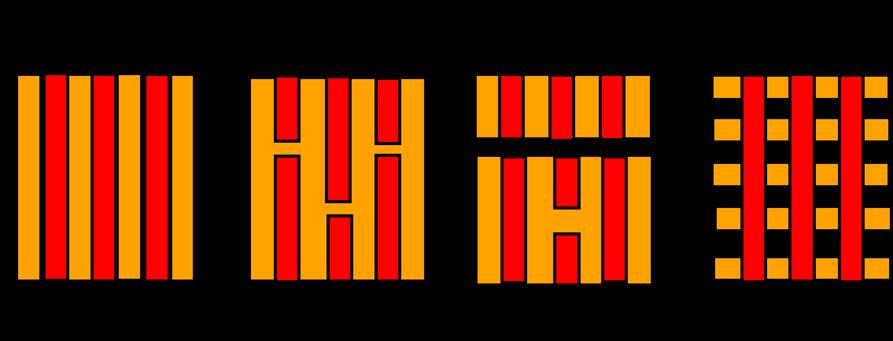
4 minute read
2.6 Referencias
especiales. Condiciones de servicio de hasta 1 600-2 000 °C eran impensables hasta hace un tiempo para este tipo de materiales, sin embargo, el desarrollo de PMC de naturaleza ablativa rompe este paradigma, perfilándose como una de las aplicaciones avanzadas de mayor nivel de desarrollo. Sin duda, el constante desarrollo de la ciencia e ingeniera de los materiales impulsa los diferentes sectores productivos, pero como se ha reconocido en este capítulo, en la actualidad, el papel de los PMC ha sido fundamental, impactando directa o indirectamente a la sociedad en general, y enmarcándose como los materiales del futuro, siendo imperativo garantizar la sostenibilidad medioambiental de estos desde la ciencia e investigación y la transferencia de estos resultados hacia la producción industrial. 2.6 REFERENCIAS [1] D. R. Askeland and P. P. Phulé, Ciencia e ingenería de los materials, 4ta ed. México, D.F.: Thomson Learning, 2005. [2] A. K. Sharma, R. Bhandari, A. Aherwar and R. Rimašauskienė, “Matrix materials used in composites: A comprehensive study,” Mater. Today Proc., vol. 21, pp. 1559–1562, 2020. [3] R. Asthana, A. Kumar and N. Dahotre, Materials processing and manufacturing. Elsevier, 2005. [4] N. Zimmermann and P. H. Wang, “A review of failure modes and fracture analysis of aircraft composite materials,” Eng. Fail. Anal., vol. 115, p. 104692, 2020. [5] K. Chawla, Composite Materials, 3rd ed. Birmingham: Springer, 2012. [6] M. Kutz, Handbook of materials selection. Hoboken: John Wiley & Sons INC., 2002. [7] Ansys Granta, “Granta EduPack”. Cambridge, UK, 2020. [8] Fibre Glast Developments Corp. (2020). About Reinforcements [Online]. SOLO PARA USO ACADÉMICO Available: https://www.fibreglast.com/product/about-reinforcements/Learning_ Center [Accessed 12 August 2020]. [9] N. Karthi, K. Kumaresan, S. Sathish, S. Gokulkumar, L. Prabhu and N. Vigneshkumar, “An overview: Natural fiber reinforced hybrid composites,
chemical treatments and application areas”, Mater. Today Proc., vol. 27, pp. 2828–2834, 2020.
Advertisement
[10] A. C. Cadore-Rodrigues, L. F. Guilardi, V. F. Wandscher, G. K. R. Pereira, L. F.
Valandro and M. P. Rippe, “Surface treatments of a glass-fiber reinforced composite: Effect on the adhesion to a composite resin”, J. Prosthodont. Res., vol. 64, no. 3, pp. 301–306, 2020.
[11] S. P. Sharma and S. C. Lakkad, “Comparative study of the effect of fiber surface treatments on the flexural and interlaminar shear strength of carbon fiber-reinforced composites”, Mater. Today Commun., vol. 24, p. 101016, 2020.
[12] A. Raju and M. Shanmugaraja, “Recent researches in fiber reinforced composite materials: A review,” Mater. Today Proc., 2020.
[13] S. Sharma, P. Sudhakara, S. K. Misra and J. Singh, “A comprehensive review of current developments on the waste-reinforced polymer-matrix composites for automotive, sports goods and construction applications: Materials, processes and properties”, Mater. Today Proc., 2020.
[14] U. V Saindane, S. Soni and J. V Menghani, “Recent research status on synthesis and characterization of natural fibers reinforced polymer composites and modern friction materials – An overview”, Mater. Today Proc., vol. 26, pp. 1616–1620, 2020.
[15] E. Flores, A. Sáenz, R. Narro and A. Castañeda, “Compuestos poliméricos y sus aplicaciones - Polymeric compounds and their applications”, CienciAcierta, vol. 59, no. 59, pp. 1–13, 2019.
[16] M. Ashby and D. Jones, Engineering Materials 2, 2nd ed. Butterworth-Heinemann, 1998. [17] G. R. Chavhan and L. N. Wankhade, “Improvement of the mechanical properties of hybrid composites prepared by fibers, fiber-metals, and nano-filler particles – A review”, Mater. Today Proc., vol. 27, pp. 72–82, 2020. SOLO PARA USO ACADÉMICO [18] M. Ashby, H. Shercliff, and D. Cebon, Materials: engineering, science, processing and design, 1st edit. Elsevier, 2007.
[19] M. K. Egbo, “A fundamental review on composite materials and some of their applications in biomedical engineering”. J. King Saud Univ. - Eng. Sci., 2020.
[20] D. K. Rajak, D. D. Pagar, R. Kumar and C. I. Pruncu, “Recent progress of reinforcement materials: a comprehensive overview of composite materials”,
J. Mater. Res. Technol., vol. 8, no. 6, pp. 6354–6374, 2019.
[21] T. Biswal, S. K. BadJena and D. Pradhan, “Synthesis of polymer composite materials and their biomedical applications”, Mater. Today Proc., 2020. [22] H. Wu et al., “Recent developments in polymers/polymer nanocomposites for additive manufacturing”, Prog. Mater. Sci., vol. 111, p. 100638, 2020. [23] X. Wang, M. Jiang, Z. Zhou, J. Gou and D. Hui, “3D printing of polymer matrix composites: A review and prospective”, Compos. Part B Eng., vol. 110, pp. 442–458, 2017. [24] B. Castanie, C. Bouvet and M. Ginot, “Review of composite sandwich structure in aeronautic applications”, Compos. Part C Open Access, vol. 1, p. 100004, 2020. [25] M. Natali, J. M. Kenny and L. Torre, “Science and technology of polymeric ablative materials for thermal protection systems and propulsion devices : A review,” Prog. Mater. Sci., vol. 84, pp. 192–275, 2016. [26] B. Singh, R. Kumar and J. Singh Chohan, “Polymer matrix composites in 3D printing: A state of art review”, Mater. Today Proc., 2020. [27] A. D. Valino, J. R. C. Dizon, A. H. Espera, Q. Chen, J. Messman and R. C. Advincula, “Advances in 3D printing of thermoplastic polymer composites and nanocomposites”, Prog. Polym. Sci., vol. 98, p. 101162, 2019. SOLO PARA USO ACADÉMICO
Capítulo 3. MATERIALES COMPUESTOS ABLATIVOS Y SISTEMAS DE PROTECCIÓN TÉRMICA Rafael Andrés Robayo-Salazar, Ph. D. Doctor en Ingeniería. Investigador del Programa de Ingeniería Mecánica (Pimec) - Grupo de Investigación en Estudios Aeroespaciales (GIEA). Escuela Militar de Aviación (Emavi) - Fuerza Aérea Colombiana. Correo-e: rafael.robayo@emavi.edu.co Julián Portocarrero Hermann Ingeniero Mecánico. Docente Programa de Ingeniería Mecánica (Pimec) - Grupo de Investigación en Estudios Aeroespaciales (GIEA). Escuela Militar de Aviación (Emavi) - Fuerza Aérea Colombiana. Correo-e: julian.portocarrero@emavi.edu.co SOLO PARA USO ACADÉMICO Palabras clave: materiales compuestos, compuestos ablativos, propiedades térmicas, sistemas de protección térmica.






